Miso Soup is a staple dish in Japan, considered to be a source of longevity and health for the Japanese. Learn how to make this flavorful Japanese soup, which is simple yet packed with plenty of umami components, and incorporate it into your daily diet.
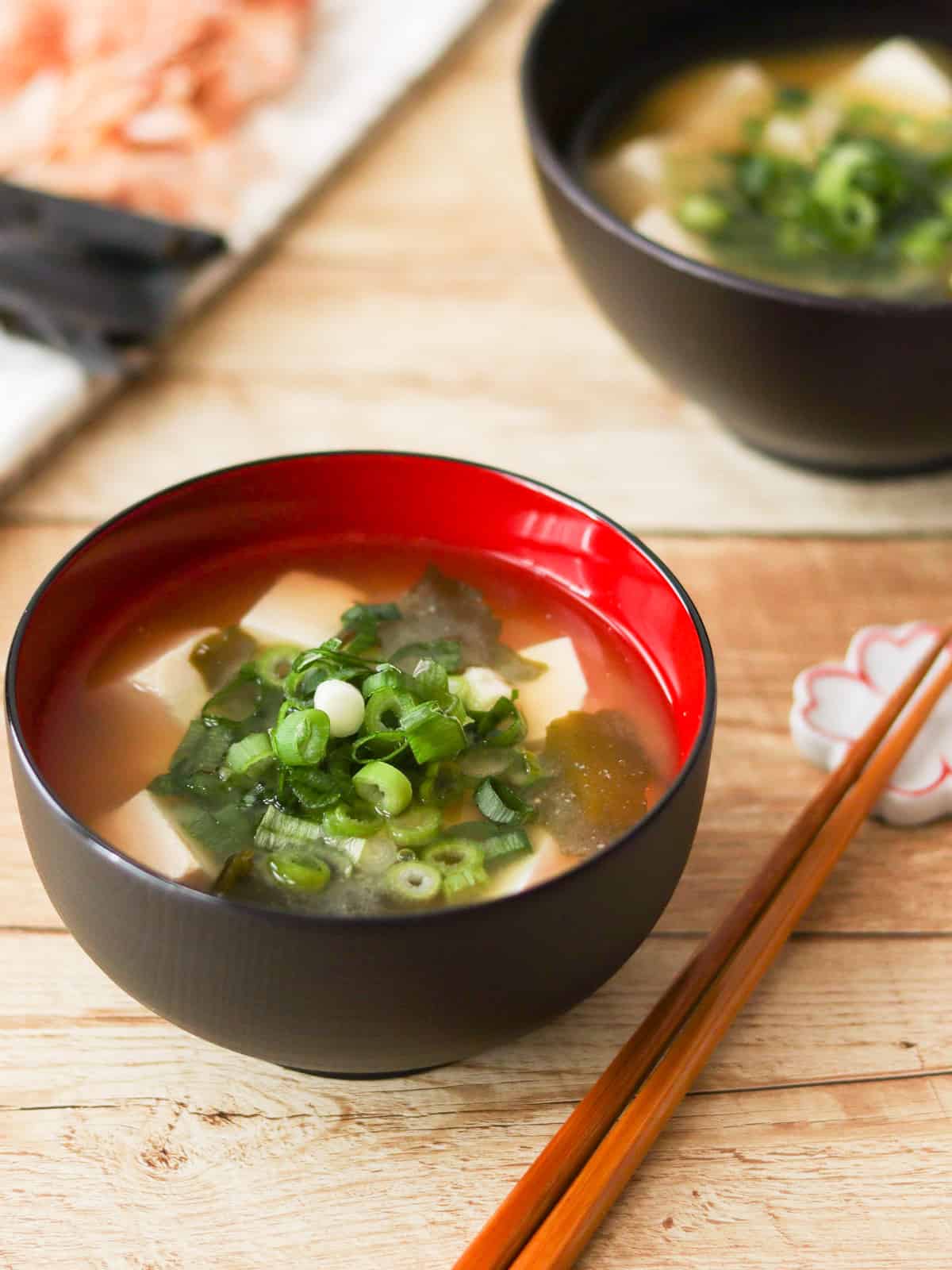
Jump to:
What is Miso Soup?
Miso Soup is a traditional Japanese dish in which various ingredients are added to a stock called "dashi" and dissolved with miso paste. "Miso" refers to a semi-solid seasoning made by fermenting and aging soybeans. Typical ingredients include tofu, wakame seaweed, or various vegetables. Depending on the added ingredients, you can enjoy subtle flavor differences.
Its history dates back to ancient times, considered to have been consumed around the 13th century, and it remains a staple on Japanese tables today. Carefully prepared miso soup is flavorful and never gets boring, even with daily consumption. It is recognized as a dish that allows for easy intake of the health benefits of miso and is regarded as a source of health and vitality for the Japanese.
Why is it good for your health?
Miso, the main ingredient in this soup, is rich in beneficial bacteria similar to those found in yogurt, which stimulate intestinal function. As approximately 70% of the cells responsible for the immune function of the human body reside in the intestines, it is thought to be effective in regulating physical health. In Japan, there is even a saying that goes, 'Miso keeps the doctor away' (meaning that miso is so healthy it could put doctors out of business).
You may be concerned about the salt content in miso, but there is no need to worry. This is because miso has the effect of lowering blood pressure and contains components that help the kidneys excrete salt. In fact, research has shown that it can reduce salt intake by about 30%.
Exploring miso varieties
This flavorful traditional Japanese soup consists of three main components: miso, dashi stock, and soup ingredients. Among them, miso is the key seasoning that determines the flavor, serving as the core of this dish. There are many varieties, primarily classified based on which 'koji' mold is used during the fermentation and aging process of soybeans, as follows:
- Kome miso (rice miso): Made by adding rice koji (malted rice) to soybeans. Most common type of miso.
- Mugi miso (barley miso): Made by adding barley koji (malted barley) to soybeans. Mainly produced in regions of Japan.
- Mame miso (soybean miso): Primarily made using only soybeans. Commonly produced in regions of Japan.
- Blended miso: A combination of the above miso types.
Complicating matters, miso classification is not limited to these; it also involves color and salt concentration.
During the manufacturing process, miso undergoes the 'Maillard reaction,' which occurs when amino acids and sugar content in soybeans and koji react, leading to changes in color. Those with minimal Maillard reaction are called "White miso" or "Light-colored miso," while those with significant Maillard reaction are termed "Red miso."
Additionally, based on salt concentration, there are classifications such as "Sweet miso" for those with low salt content and "Strong miso" for those with high salt content.
In other words, miso is classified by the type of koji used, color, and salt concentration. For example, there are varieties like 'white rice miso with a sweet flavor' and 'red barley miso with a strong flavor.'
So, which miso is best suited for miso soup? This entirely depends on personal preference. If you are making this dish for the first time, I recommend starting with the most common option, white rice miso with a sweet flavor, and then exploring your preferences from there. By the way, I always have both white and red rice miso, each with a sweet flavor, in my pantry.
You might come across miso with dashi added, but if you want to make flavorful miso soup, it is best to avoid it. While miso with added dashi claims to simplify miso soup preparation by omitting the need to make dashi separately, I can assure you it won't be as delicious. Making authentic miso soup absolutely requires preparing dashi separately.
The world of dashi
Dashi stock is also a crucial element that determines the flavor of miso soup. It forms the base of this dish, and the choice of dashi greatly affects its flavor.
The most commonly used type of dashi is "Awase Dashi" (a combination dashi), made from kombu dashi and bonito dashi. In Japan, when people simply mention 'dashi,' they often refer to this awase dashi, which is not only used in miso soup but also in various other Japanese dishes. The recipe on this page also includes instructions on how to make awase dashi.
Using other types of dashi, such as anchovy dashi or shiitake dashi (shiitake mushroom stock), is also recommended. Especially for those following a plant-based diet, awase dashi made from kombu dashi and shiitake dashi would be suitable.
The world of dashi is deep and cannot be easily summarized. If you want to learn more about dashi, start with kombu dashi, then move on to bonito dashi or other types of dashi. Clicking on the names of each type of dashi in the text will link you to the respective recipe pages.
Ingredient variations
Miso soup gains its character depending on the ingredients you add. Tofu, wakame seaweed, and green onions (scallions) are the most common ingredients added to this dish, but you can also add fried tofu, mushrooms, or various vegetables that you prefer. It might be interesting to try adding local vegetables.
However, since miso is the star in this soup, it is recommended to limit the number of ingredients to three at most. This is because adding too many ingredients can blur the flavor. If you want to add more ingredients, I personally recommend trying Tonjiru (miso soup with pork and vegetables), as the strong flavor of pork is not overpowered by the multiple ingredients.
Below is a recipe I'm sharing for a variation of miso soup. Feel free to take a look if you are interested.
- Tonjiru (miso soup with pork and vegetables)
- Miso soup with poached egg
- Ishikari jiru (Japanese salmon miso soup)
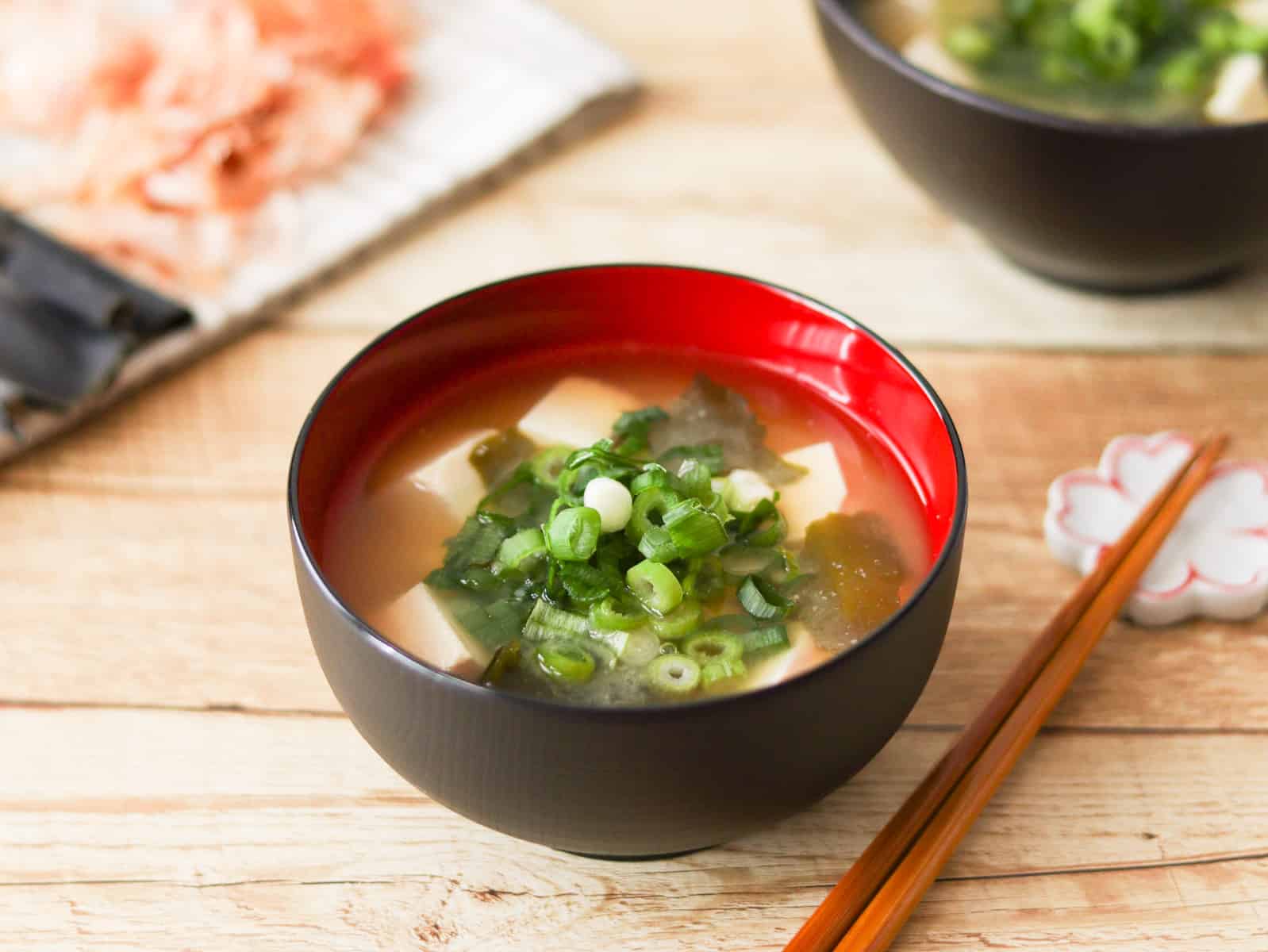
📋Step-by-step recipe
Ingredients
- 6 oz tofu
- 2 tsp dried wakame seaweed
- 2 green onions / scallions
- 2 Tbsp miso
Awase dashi:
- 2 cups water
- 0.2 oz kombu (dried kelp)
- ½ cup bonito flakes (katsuobushi)
Instructions
🕒 Total: 50 minsIf you already have awase dashi or another type of dashi, start from step 5. In that case, use 1 ⅔ cups (400 ml) of your dashi for 2 servings.
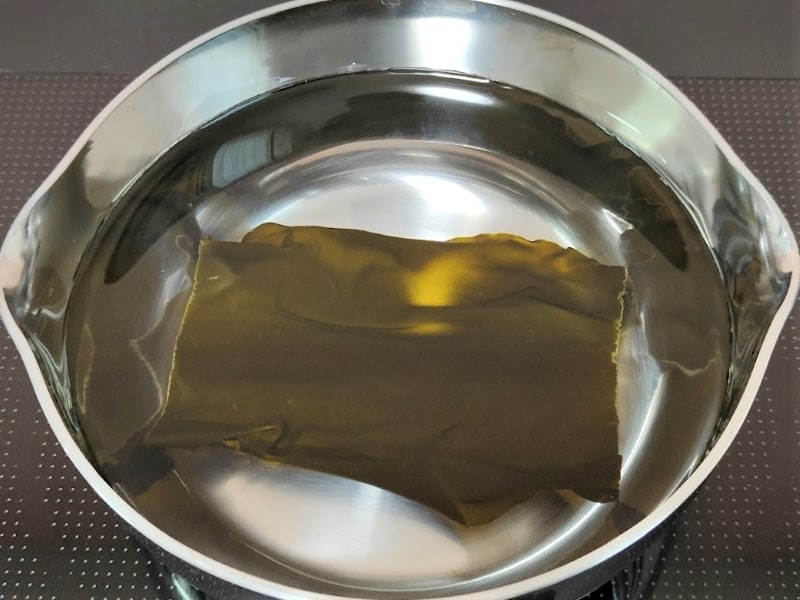
Step 1
Put water and kombu in a pot and let it sit for at least 30 minutes until the kombu softens.
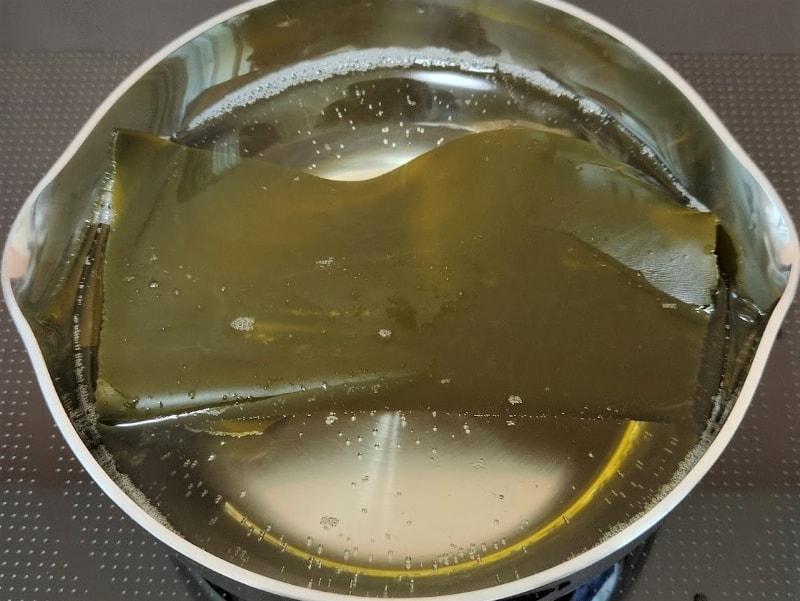
Step 2
Heat the pot over very low heat for about 10 minutes or longer. When small bubbles start to appear on the surface, remove the kombu.
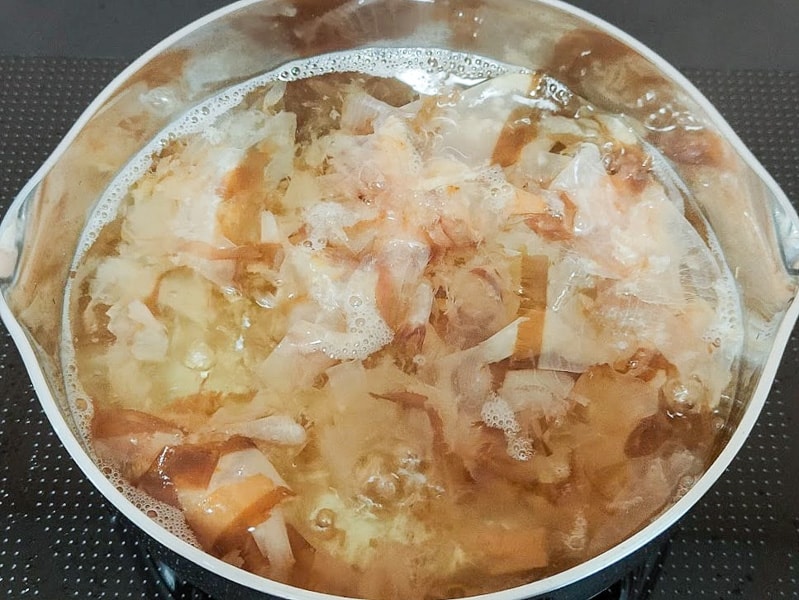
Step 3
Increase the heat and bring the water (kombu dashi) to a boil. Once boiling, reduce the heat to low, add bonito flakes, and let it simmer for 3 minutes.
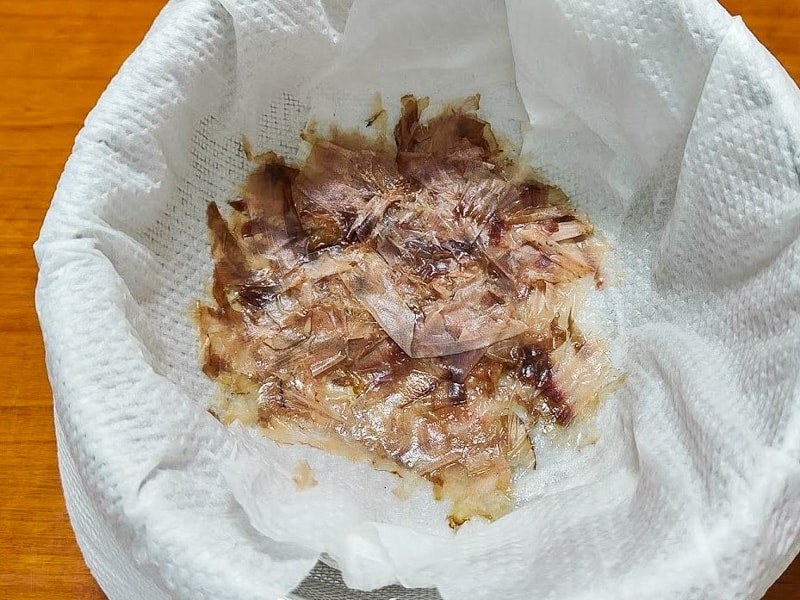
Step 4
Turn off the heat and strain the mixture through a sieve lined with paper towels or a cloth (such as cheesecloth). Alternatively, if you don't mind a few fine bonito flakes remaining, you can simply use a fine-mesh strainer. Awase dashi, which combines kombu dashi and bonito dashi, is now ready.
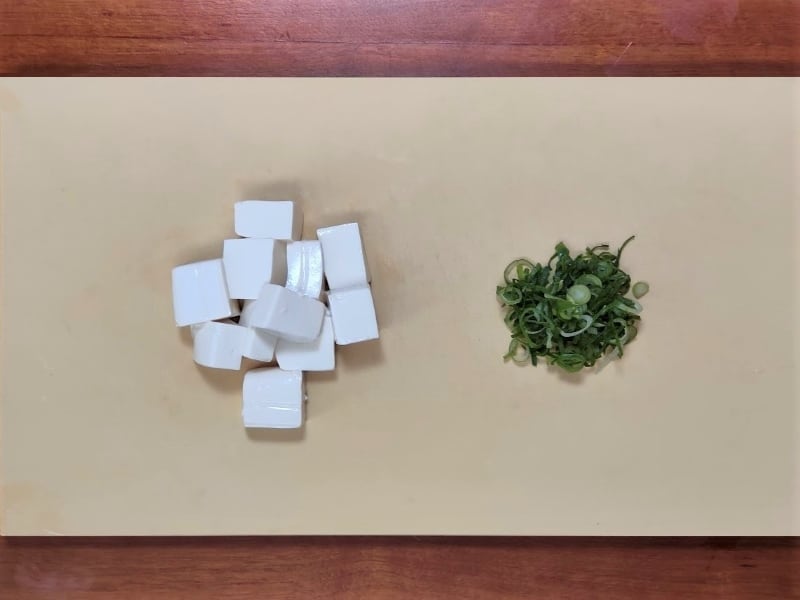
Step 5
Cut tofu into bite-sized pieces. Thinly slice green onions.
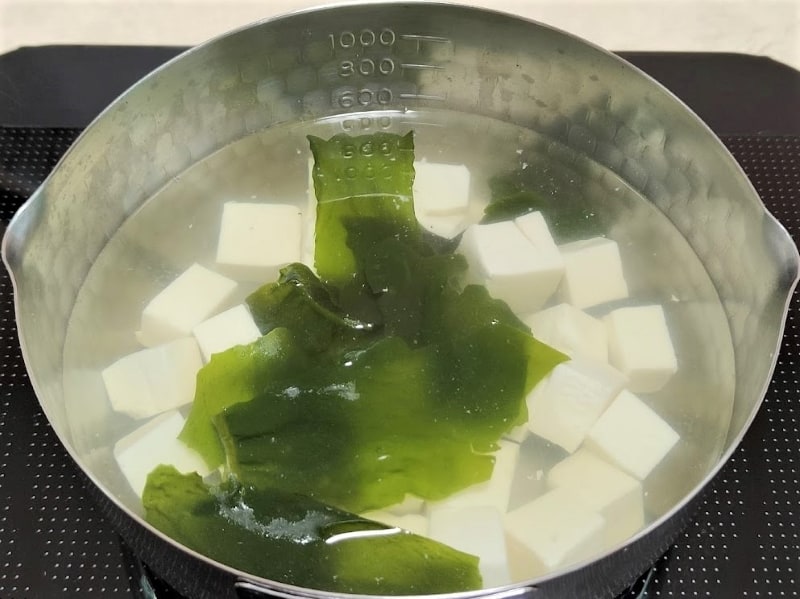
Step 6
Add the dashi, tofu, and wakame seaweed to the pot and cook until heated through.
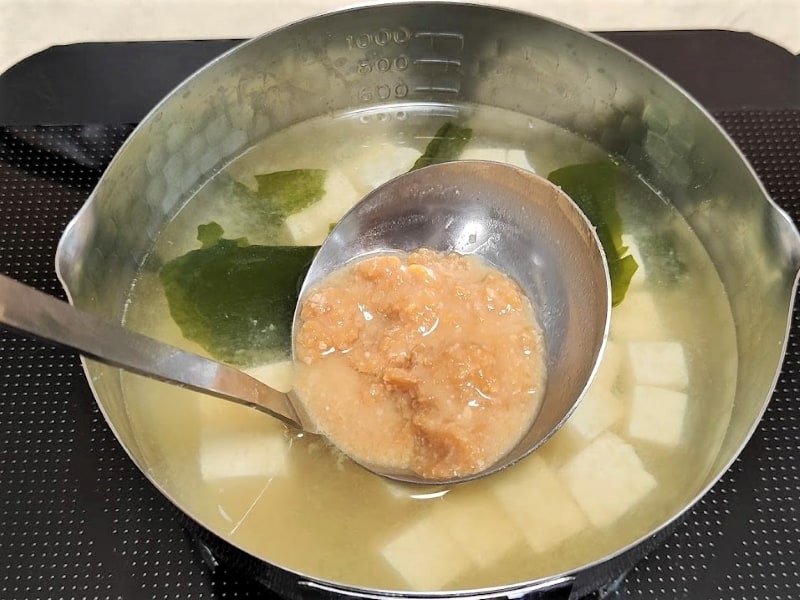
Step 7
Turn off the heat and dissolve miso in the pot using a ladle and chopsticks. Serve in each bowl and top with the green onions.
To store
You can store it in the refrigerator for up to 2 days.
Cooking tips
A simple yet important tip for making delicious miso soup is to add miso last and avoid heating it afterward. If the miso is heated after being added, its flavor and beneficial bacteria may be diminished.
Therefore, I recommend enjoying the soup immediately after it is made. If reheating is necessary, do so gently, just enough to prevent it from boiling.
If you try this recipe, I’d love to hear what you think. Please consider leaving a review and star rating in the comments below. If you enjoyed it, I’d really appreciate it if you shared it with your friends.
Recipe card
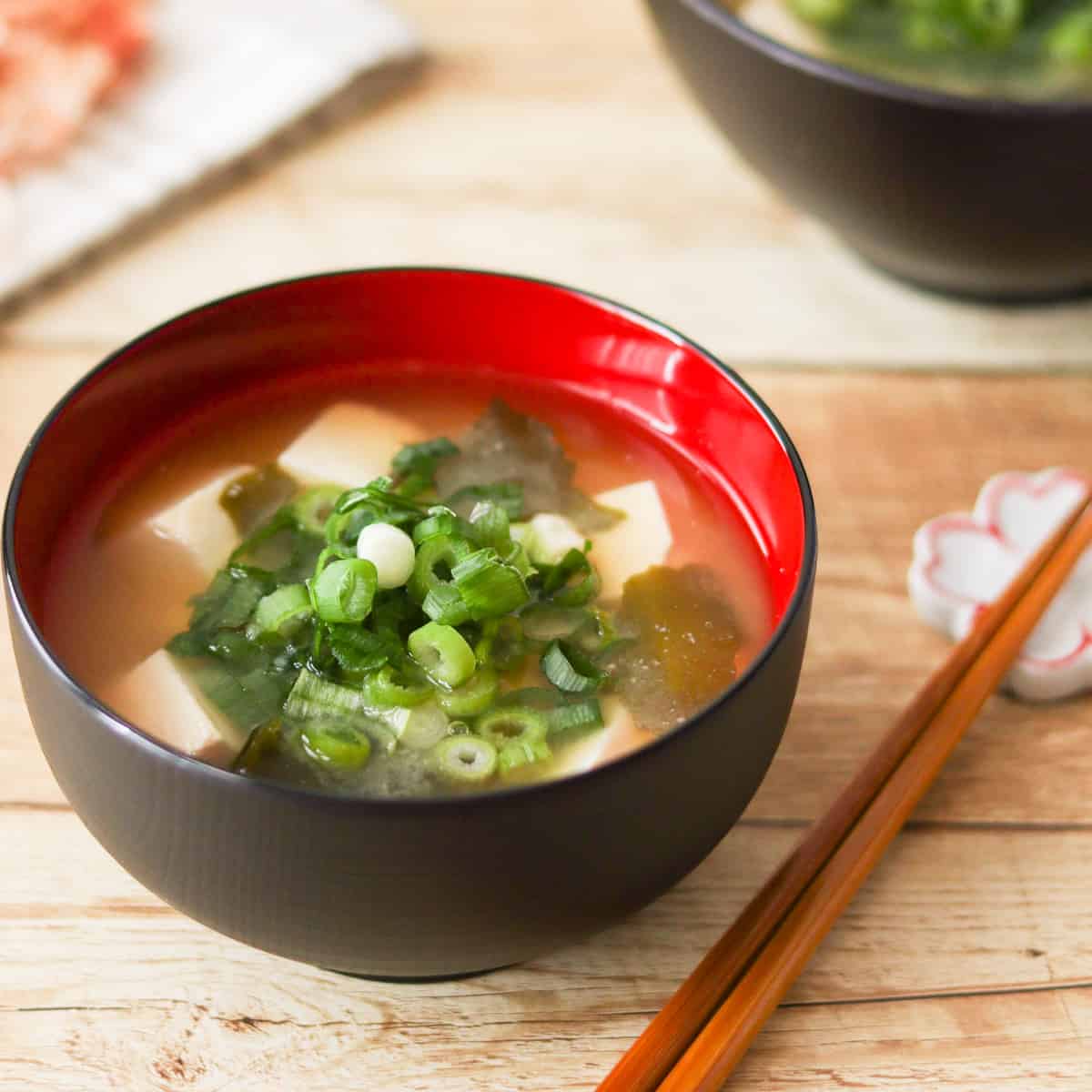
Authentic Japanese Miso Soup
Ingredients
- 6 oz tofu
- 2 tsp dried wakame seaweed
- 2 green onions / scallions
- 2 Tbsp miso
Awase dashi:
- 2 cups water
- 0.2 oz kombu (dried kelp)
- ½ cup bonito flakes (katsuobushi)
Instructions
- Put water and kombu in a pot and let it sit for at least 30 minutes until the kombu softens.
- Heat the pot over very low heat for about 10 minutes or longer. When small bubbles start to appear on the surface, remove the kombu.
- Increase the heat and bring the water (kombu dashi) to a boil. Once boiling, reduce the heat to low, add bonito flakes, and let it simmer for 3 minutes.
- Turn off the heat and strain the mixture through a sieve lined with paper towels or a cloth (such as cheesecloth). Alternatively, if you don't mind a few fine bonito flakes remaining, you can simply use a fine-mesh strainer. Awase dashi, which combines kombu dashi and bonito dashi, is now ready.
- Cut tofu into bite-sized pieces. Thinly slice green onions.
- Add the dashi, tofu, and wakame seaweed to the pot and cook until heated through.
- Turn off the heat and dissolve miso in the pot using a ladle and chopsticks. Serve in each bowl and top with the green onions.
Notes
- If you already have awase dashi or another type of dashi, start from step 5. In that case, use 1 ⅔ cups (400 ml) of your dashi for 2 servings.
- You can store it in the refrigerator for up to 2 days.

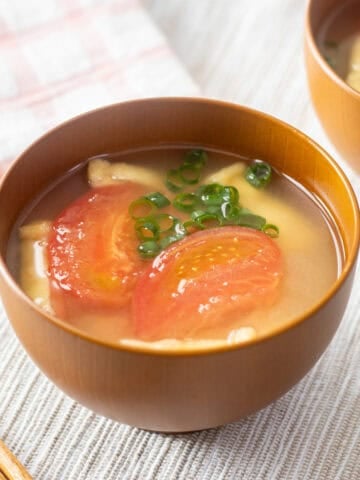
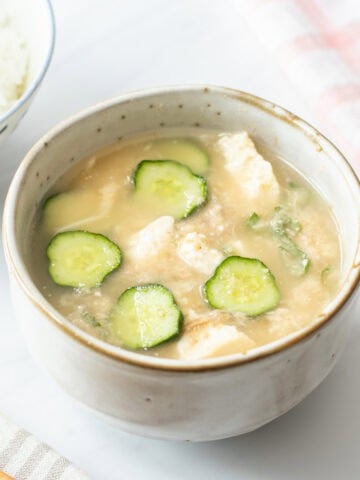
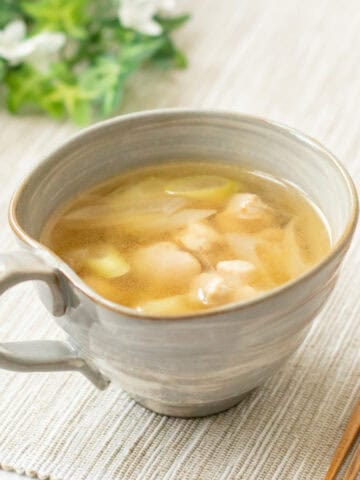

Leave a Rating and a Comment